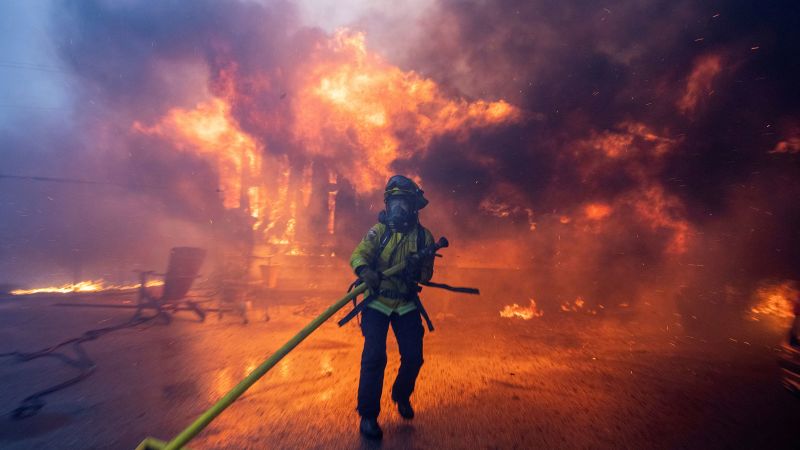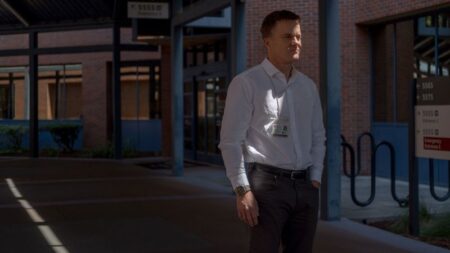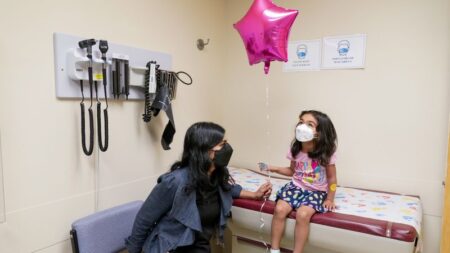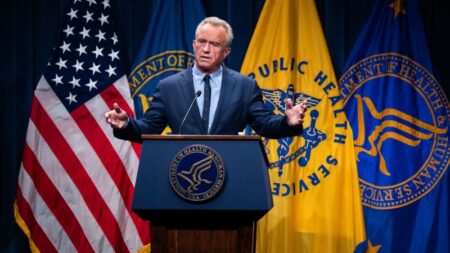The impact of wildfires on mental health is increasingly apparent, as highlighted by the experiences of Dr. Jyoti Mishra, an associate director at the University of California’s Climate Change and Mental Health Council and an associate professor of psychiatry at UC San Diego. While her own city isn’t under siege, Dr. Mishra’s family from Los Angeles has sought refuge in her home, reflecting the physical dislocation that wildfires induce. She articulated the uncertainty surrounding the safety of their home, emphasizing the emotional turmoil felt by those affected by wildfires.
Research indicates that this uncertainty extends beyond immediate stressors, contributing significantly to the mental health struggles of those exposed to wildfires. Understanding the broad spectrum of mental health disturbances caused by such disasters is crucial. Dr. Mishra’s earlier work on the catastrophic 2018 Camp Fire in Northern California established a clear correlation: individuals directly impacted by fires exhibited heightened levels of anxiety, depression, and post-traumatic stress disorder (PTSD) compared to those in unaffected communities. The chaotic environment created by a wildfire can lead to difficulties in focusing, as individuals feel constantly threatened. This creates a particularly hazardous psychological landscape for those experiencing evacuation orders or warnings, as seen in Southern California’s recent fire outbreaks.
The immediate psychological impacts of these disasters manifest as emotional upheaval, with affected individuals reporting heightened levels of stress, anger, sadness, and frustration. Many also suffer from disrupted appetite, insomnia, and recurrent nightmares, with some resorting to substance use as a coping strategy. Longitudinal research has documented that the ramifications of such trauma can persist for months or even years, raising concerns about a potential rise in depression and anxiety among previously unaffected persons.
In addition to the trauma inflicted by loss and uncertainty, the physical hazards of smoke exposure further complicate the mental health landscape. According to Dr. Yang Liu, chair of environmental health at Emory University’s Rollins School of Public Health, smoke inhalation has been linked to increased anxiety disorders, particularly affecting vulnerable populations such as women and older adults during major smoke events. Los Angeles’ air quality, often significantly deteriorated during wildfire seasons, poses additional risks to mental health.
Community and individual responses are vital in promoting mental well-being and recovery post-disaster. Health professionals recommend immediate measures such as closing windows to avoid smoke inhalation, engaging HEPA filters in homes, and limiting outdoor exposure. It is equally critical to address the mental health of children and adolescents. Dr. Sabrina Renteria, a child and adolescent psychiatrist at Cedars-Sinai, remarked on the emotional vulnerability of children during such crises. The necessity for open communications about fears and feelings, coupled with a return to normal routines, can help mitigate anxiety.
Healthy coping mechanisms, including mindfulness practices and talking about emotions, are essential families can employ. Both parents and professionals should model positive responses to adversity while guided by strategies to manage stress optimally. Such strategies might include relaxation practices like deep-breathing exercises or engaging in creative outlets.
Dr. Mishra has suggested that volunteering within the community can foster healing. Connecting with others who have experienced similar traumas can help individuals process their feelings, though it is essential to maintain a balanced and supportive atmosphere when discussing shared experiences. Media consumption should also be monitored; both adults and children benefit from limited exposure to distressing news about wildfires, while parents play a critical role in interpreting news stories to highlight the positive work being done by first responders.
Finally, community solidarity and outreach post-disaster are vital. As Dr. Mishra poignantly noted, fostering resilience in individuals and communities is integral to collective healing. During such devastating times, reaching out to loved ones, whether directly impacted or watching from afar, creates a network of support. In the wake of climate change, such catastrophes are no longer confined to specific regions, making mutual aid and understanding essential for recovery and resilience. Therefore, the call for community action and individual support is more critical now than ever, as we collectively navigate the turbulent landscape of climate-induced disasters and their mental health implications.












